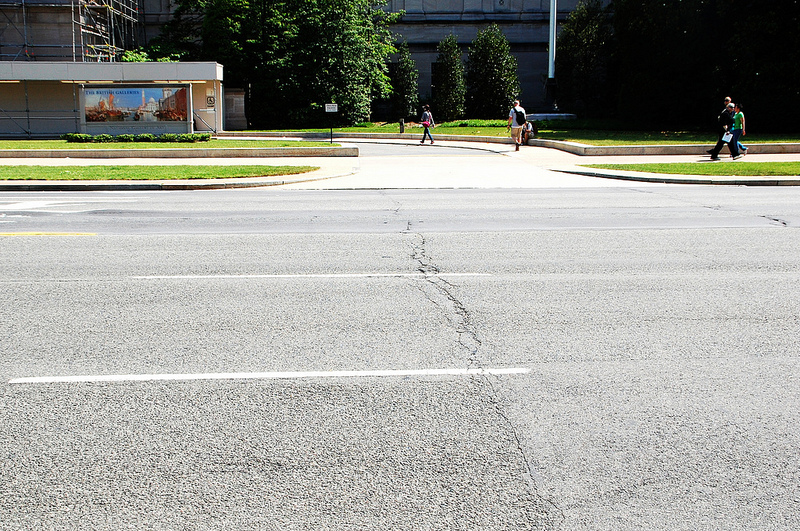Update 11/19/18: They’re marking the Garfield assassination spot! Here are details from the News-Herald.
Four US presidents have died after being shot. Three of the shooting sites are clearly marked today – Ford’s Theater, of course, in Washington, is known far and wide as the place where Lincoln took his bullet. Dealey Plaza in Dallas does not play up its role in the Kennedy assassination to such a degree, but it has plaques in the area, and an X on the road where the assassination went down. Buffalo, too, marks the place where President McKinley fell at the hands of Leon Czolgosz.
As for the fourth spot, the site where James Garfield was shot? It’s not marked at all. Garfield was about to catch a train at the Baltimore and Potomac Railroad Station in Washington, when Charles Guiteau shot him in the back. The president almost certainly would have lived, had his doctors not spent the next eighty days putting their unsterilized fingers into the bullet hole. Nonetheless, Garfield succumbed that September and the railroad station became a presidential assassination spot.
The railroad station did, in fact, put up a marker later that year – it had a bronze star on the floor where Garfield was standing at the time of the shooting, and on the wall they put up a plaque in the shape of an eagle. But the railroad understandably thought highlighting its station’s role in a national tragedy wasn’t good for business, and so in 1897 they took it down following a station fire. The station is long gone, demolished on the order of President Theodore Roosevelt himself in an effort to clean up the National Mall; it’s not known whether the star and plaque are in a drawer somewhere, or in a landfill, or in someone’s attic. We just don’t know.
And as a result, we don’t know the precise location of the shooting anymore, but I came as close as one can get these days. The railroad station stood at the southwest corner of Constitution Avenue and 6th Street, northwest. Today that intersection runs between the Newseum and the National Gallery of Art’s West Building. According to this article about the station, “In 1936, District city engineers estimated that the probable spot of the shooting was near the center of modern (1936) Constitution Avenue, some 30 or 40 feet west of the west curb of Sixth Street.” If my impromptu measuring is right – and to those of you who saw me there last week, I was not trying to pass a self-administered sobriety test, but was using my feet to measure out 30-40 feet – it would put the shooting site somewhere around that crack in the road in the picture above.
Probably.
One last note here from the same article: “In 1952, the Committee on Plaques for the National Capital Sesquicentennial recommended placing a historical marker on the grounds of the National Gallery to note the site of Garfield’s assassination.” So why isn’t there one? I’ll see if I can find out.

